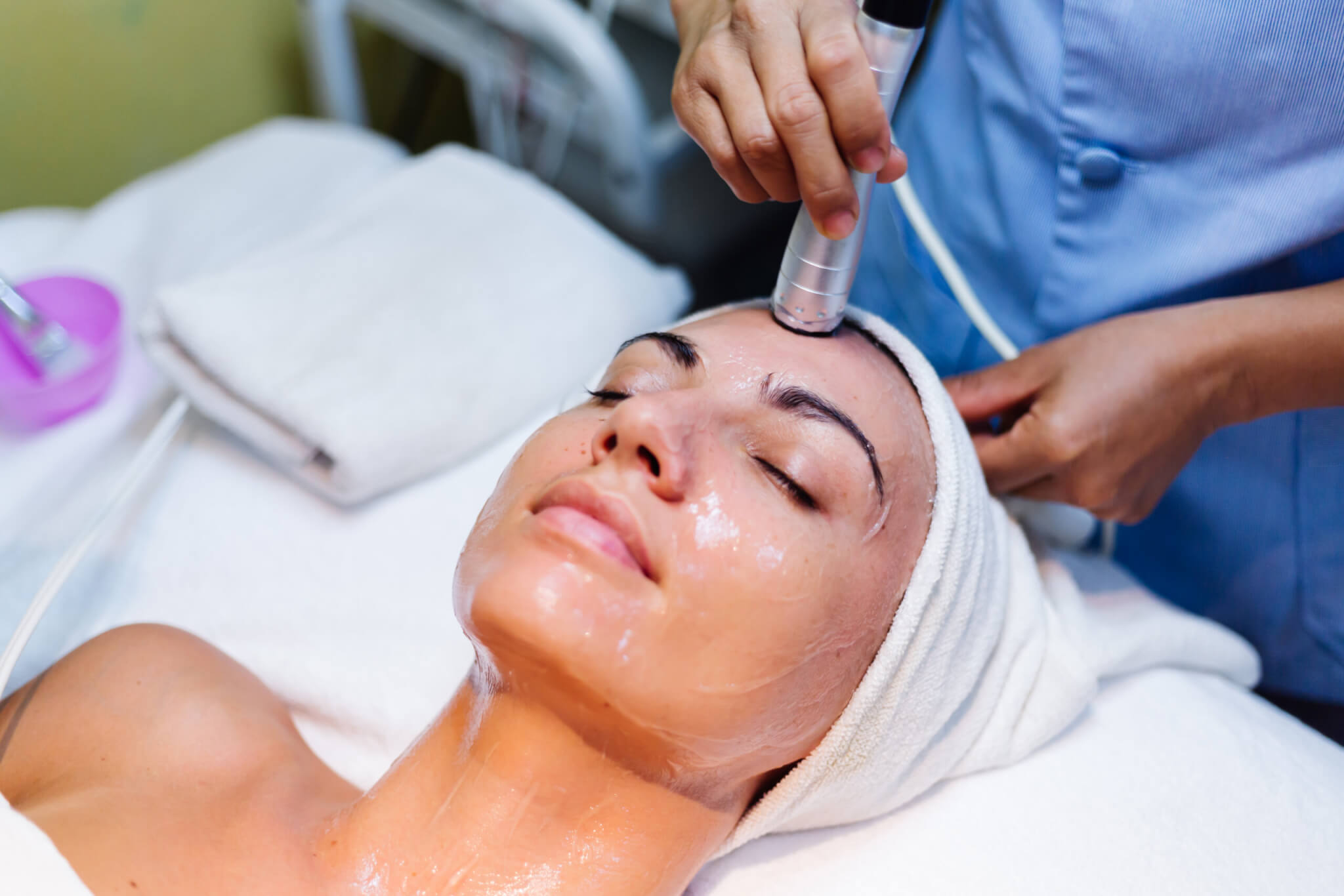Combination skin can be a challenge to care for, especially when you’re dealing with oily and dry areas at the same time. Unlike skin that is uniformly oily or dry, combination skin requires a more tailored approach. If your forehead, nose, and chin often appear shiny while your cheeks feel tight or flaky, chances are you have combination skin. Fortunately, with the right skincare routine, it is entirely possible to balance your complexion and maintain healthy, radiant skin.
This article from Derm Artisan explores everything you need to know about building the ideal skincare regimen for combination skin. From product recommendations to ingredient insights, we’ll help you create a routine that works in harmony with your unique skin type.
What is Combination Skin?
Combination skin is characterized by having multiple skin types on different areas of the face. Most commonly, people with this skin type experience an oily T-zone—comprising the forehead, nose, and chin—while the cheeks and other areas may be dry or normal. The oily areas tend to be prone to enlarged pores and occasional breakouts, while the drier zones might show signs of flakiness or tightness. This duality can make skincare selection tricky, as products that help one area may irritate or unbalance another.
Cleansing: The First Step to Balance
A proper skincare routine always begins with cleansing. For combination skin, the goal is to eliminate excess oil and impurities without drying out more delicate areas. Harsh cleansers that strip the skin can trigger oil overproduction in the T-zone and leave the cheeks feeling uncomfortable.
A gentle gel or foam cleanser works well for most people with combination skin. It should be free from sulfates and formulated to maintain the skin’s natural pH balance. Look for options that contain hydrating ingredients like glycerin or calming botanicals such as green tea, which can purify the skin without causing irritation.
For those who wear makeup or sunscreen, double cleansing in the evening may be beneficial. This involves using a mild oil-based cleanser to break down makeup and excess sebum, followed by a water-based cleanser to rinse away any residue. This approach ensures the skin is thoroughly clean while respecting its natural moisture barrier.
Toning: Restore and Refresh
Toners play a critical role in preparing the skin for subsequent products. For combination skin, the ideal toner should help refine pores and remove any lingering debris while providing lightweight hydration. Alcohol-free formulas are best, as alcohol can dehydrate the skin and exacerbate dryness on the cheeks.
Toners that include niacinamide are especially beneficial, as this ingredient helps regulate oil production, reduce inflammation, and improve the appearance of pores. Other helpful components include chamomile, which soothes irritated skin, and hyaluronic acid, which hydrates without adding heaviness.
A good toner refreshes the skin and sets the stage for serums and moisturizers to work more effectively.
Moisturizing: Hydrate Without Overloading
It’s a common misconception that people with oily skin—or in this case, oily zones—should avoid moisturizers. In reality, failing to hydrate the skin can signal it to produce even more oil. For combination skin, the best moisturizers are those that offer sufficient hydration without being heavy or greasy.
Lightweight, water-based moisturizers are ideal for daytime use. These often come in gel or gel-cream textures that absorb quickly and leave a smooth, matte finish. Ingredients like hyaluronic acid and ceramides are excellent choices, as they help maintain the skin’s moisture barrier and provide lasting hydration without clogging pores.
Some individuals may choose to use different moisturizers for different parts of the face—one for the oily areas and another for the drier regions. This zoning technique enables targeted care, helping to maintain a balanced complexion throughout the day.
Treating Specific Concerns
Because combination skin has varying needs across the face, it often benefits from targeted treatments. For example, oily areas such as the T-zone may require products that control shine and prevent breakouts. Treatments containing salicylic acid can help keep pores clear and reduce the likelihood of acne. Clay-based masks, used once or twice a week, can also help absorb excess oil and refine the skin’s texture.
On the other hand, the cheeks and other dry areas may benefit from richer, more nourishing serums or creams. These might include ingredients like squalane, panthenol, or vitamin E, which offer hydration and repair without being overly occlusive.
This tailored approach—sometimes referred to as multi-masking or zoning—allows each part of the face to receive what it needs without compromise.
Sun Protection: Daily and Year-Round
Sunscreen is one of the most essential steps in any skincare routine. For combination skin, it’s essential to select a broad-spectrum SPF that provides protection without exacerbating oiliness or triggering breakouts. Mineral sunscreens containing zinc oxide or titanium dioxide are often well-tolerated, even by sensitive skin types.
Gel or fluid sunscreens that dry down to a matte or satin finish are excellent options for those looking to control shine while staying protected. Make sunscreen a daily habit, regardless of the weather or your time spent outdoors, as ultraviolet rays can contribute to both dryness and oiliness, as well as premature aging.
Exfoliation: Less is More
Exfoliating the skin helps remove dead cells, unclog pores, and improve overall texture. However, over-exfoliation can lead to irritation, sensitivity, and even more oil production. For combination skin, gentle exfoliation one to two times per week is typically sufficient.
Chemical exfoliants, such as alpha-hydroxy acids (like lactic acid) and beta-hydroxy acids (like salicylic acid), are generally preferred over physical scrubs. These acids work at the surface or within the pores to clear buildup and smooth the skin without the risk of microtears.
Using a product that combines these acids in balanced concentrations can help exfoliate the oily T-zone while being gentle enough for the drier areas of the face.
The Role of Serums and Boosters
Serums are concentrated products designed to deliver active ingredients deeper into the skin. For combination skin, hydrating serums are particularly valuable because they can provide moisture without adding extra oil. Serums containing hyaluronic acid, niacinamide, or peptides help improve skin texture and tone, while also balancing both oily and dry areas.
Applying a serum before your moisturizer enhances the effectiveness of your routine and ensures your skin receives the necessary nutrients to function optimally.
Morning and Evening Routines
Combination skin may benefit from slightly different routines in the morning and evening. In the morning, focus on cleansing, applying a hydrating serum or toner, using a lightweight moisturizer, and finishing with sunscreen. This routine prepares your skin for the day while managing oil and protecting against environmental damage.
At night, your routine should prioritize repair and renewal. Begin with a double cleanse if needed, followed by a balancing toner and treatment serums. Finish with a moisturizer suited to your skin’s hydration needs. If your skin feels particularly dry, consider layering a hydrating gel underneath your regular night cream to provide extra moisture.
Adapting to Seasonal Changes
Changes often influence combination skin in the climate and environment. During colder months, the skin may become drier, especially on the cheeks. In this case, switching to a slightly richer moisturizer or adding a hydrating serum can help. In hot or humid conditions, oiliness may become more pronounced, making it a good time to switch to lighter products and increase the use of oil-control treatments.
Understanding how your skin reacts to these external factors will help you make timely adjustments to your routine, keeping your complexion balanced year-round.
Common Mistakes to Avoid
One of the most common mistakes with combination skin is treating it as if it were uniformly oily or dry. Using the same product all over your face without considering the needs of different areas can lead to imbalances. For example, applying a mattifying product to already dry cheeks can cause irritation, while using a rich cream on your oily T-zone may clog pores.
Skipping moisturizer is another frequent error. Even if parts of your face are oily, your skin still needs hydration to function properly. Similarly, neglecting sun protection can lead to long-term damage and exacerbate existing skin issues.
Reading product labels and selecting formulas designed for combination or sensitive skin can help you avoid these pitfalls and maximize the benefits of your routine.
Conclusion: Find Your Balance
Creating the ideal skincare routine for combination skin requires understanding your skin’s unique needs and selecting the right products. It’s about balance—hydrating without clogging pores, controlling oil without over-drying, and protecting your skin against daily stressors.
At Derm Artisan, we believe that skincare should be both personalized and practical. Our curated selection of products is designed to help you manage combination skin with ease and confidence. Whether you’re just beginning your skincare journey or looking to refine your current routine, we’re here to support you every step of the way.
To explore our dermatologist-recommended skincare solutions for combination skin, visit www.dermartisan.com and find the perfect match for your skin.






